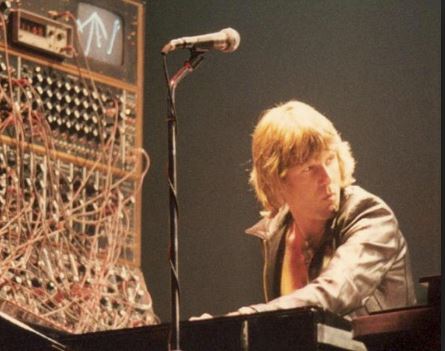Today’s an especially slow workday and I’ve been reading a lot of interviews and articles at The Creative Independent. I haven’t had any particular epiphanies as a result, but it’s stirring the brain juices a little.
But I did have a minor revelation this morning about the connection between wavefolding and phase modulation thanks to Open Music Labs being, well, open about their designs. In particular, the Sinulator, which is similar to the Happy Nerding FM Aid — a module I owned once, let go of because I figured I had enough FM/PM capability in my system. (Frequency modulation and phase modulation are very closely related; the simple version is that a continuously advancing phase is frequency, and PM is basically indistinguishable from linear FM in terms of results.) I’ve wished a few times that I’d kept the FM Aid, but could sometimes get similar results out of Crossfold. I didn’t understand why, though.
OML’s description and blessedly simple mathematical formula (no calculus or funny Greek letters!) make me realize, this is basically the same thing described by Navs some time ago (I think in a forum post rather than the blog though). And it ties in with my recent efforts to do nice-sounding wavefolding with the ER-301.
“Sine shaping” is a commonly used shortcut to wavefolding as well as triangle-to-sine shaping. It’s literally just plugging an audio input in as x in the function sin(xg), where g is the gain.
If g is 1, and x happens to be a sawtooth or triangle wave, you’ll get a sine wave out of it. If the input is a sine, you get a sine that folds back on itself a bit… and the higher g goes above 1, the more the output will fold over on itself and get more complex and bright. (Better sounding analog wavefolders and their digital imitators don’t map to a sine exactly, but it’s a similar-looking curve. Also they use mulitple stages in series for more complex behavior. But a sine totally does work.) What I learned here is that adding another term inside that function will shift the phase of the output… tada, phase modulation exactly how Yamaha did it in the DX series (and then confusingly called it FM). A whole lot of puzzle pieces clicked together.

Anyway… in this model because one just adds the two inputs, it doesn’t really matter which is the carrier and which is the modulator. Why not use independent VCAs on both, and sequence them separately? Maybe some kind of polymetric, occasionally intersecting thing where it’s like two interacting fields, totally fitting the theme of the album I’m working on? To lend form to the piece, one of those inputs can be transposed, have its envelope or intensity changed, or a third input can be added (it’s just addition)…
I don’t normally plan my compositions quite so much when I’m away from the instrument itself, and I almost never get this… academic about it. (Is that a dirty word?) But I’m eager to try this one.
So there’s a free peek inside a process I don’t usually use.

